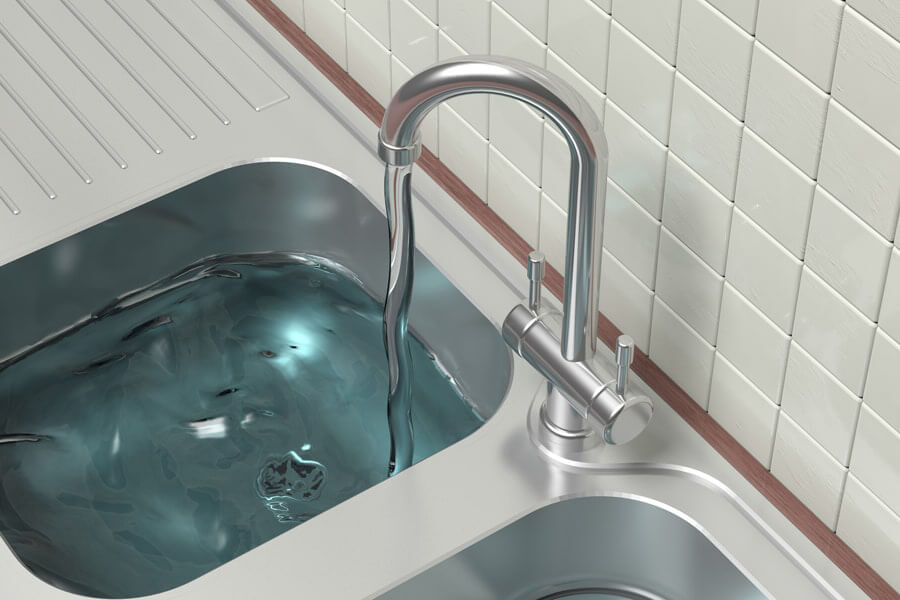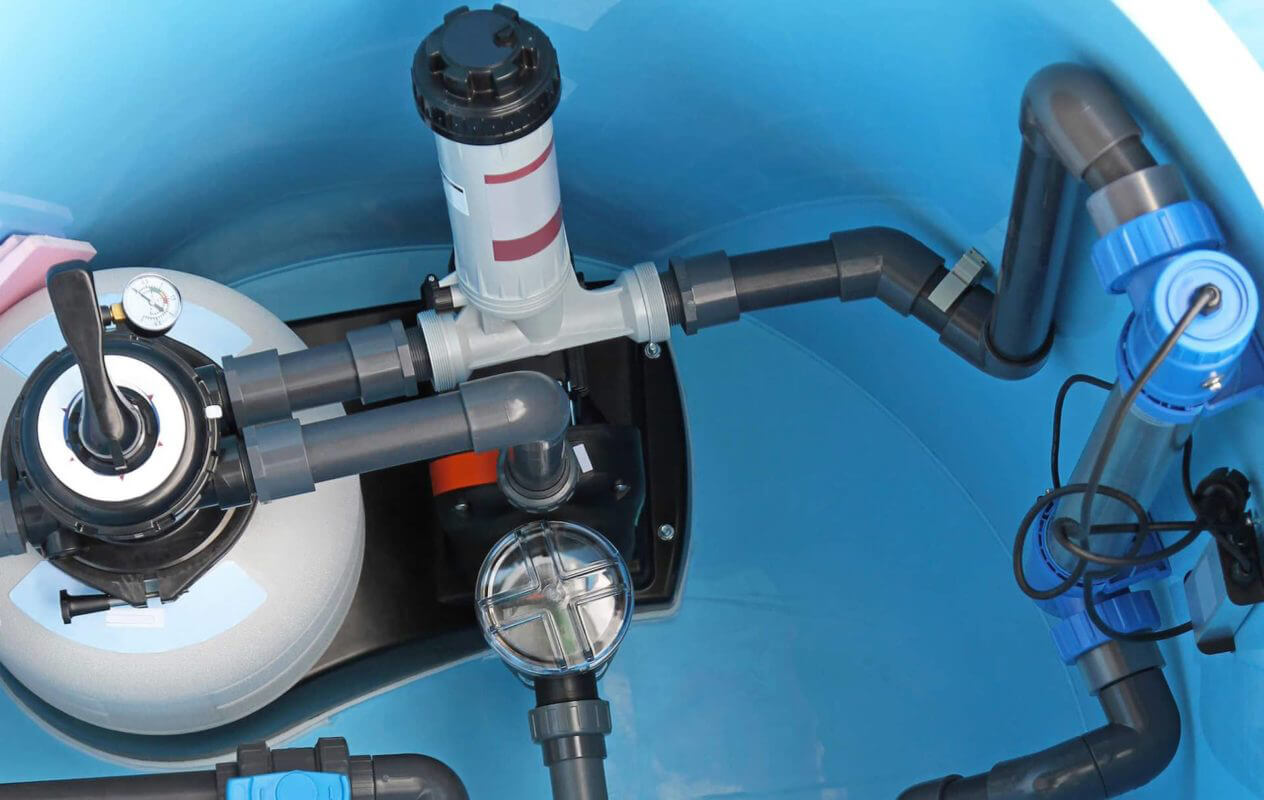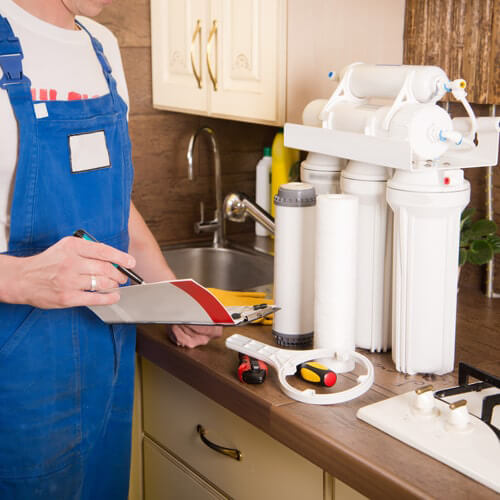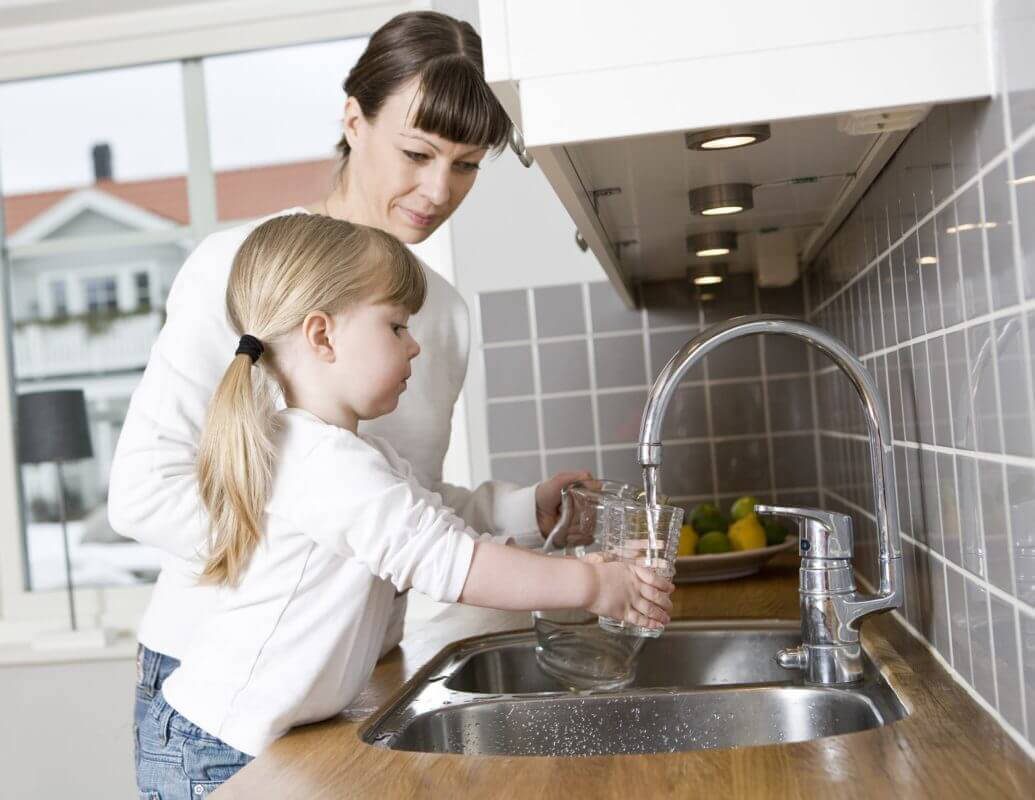If your water is coming from a well and the water is oxidation colored, then the issue is perhaps iron. If the water color is dark it possibly will be either sulfur, which has a smell like nasty eggs or manganese. All of these can be cured with an ion exchange water filtration system. A greater issue is if the water has a very thin dirt substance which could indicate the existence of colloidal clay. A good indication if you have a clay issue is if the water in a cup stays gloomy after sitting for 60 minutes. If this is the situation a coagulation filter system could be necessary.
If you want to just deal with the consuming and cooking water at your sink POU (point of use), you have got numerous properly alternatives. A Reverse Osmosis System can substantially enhance the flavor and the fine of your water. If the offensive taste is genuinely chlorine then an excellent carbon filtration unit may be used.
If you elect to treat the whole house, a system that is installed at the point where the water enters the home POE (point of entry), then your first step is to identify what is causing the problem (have a water analysis done). Once you have identified what is causing the taste problem you can then research what type of water treatment equipment is designed to address your specific needs.
The coliform microorganism may be an indicator that the well can be susceptible to microorganism infection. There are several choice which you have. one is to disinfect the nicely and retest for coliform. If this 2d check additionally shows nice for coliform, then a hollow residence water remedy gadget ought to be considered. The most commonly used remedy techniques are ultraviolet (uv), ozonation and chemical feed pump.
At the point when water is alluded to as “hard” this just means, it contains a larger number of minerals than standard water. These are particularly the minerals calcium and magnesium. The level of hardness of the water increments, when more calcium and magnesium breaks up.
Magnesium and calcium are emphatically charged particles. As a result of their nearness, other emphatically charged particles will break up less effortlessly in hard water than in water that does not contain calcium and magnesium.
This is the reason for the way that cleanser doesn’t generally break up in hard water.
Remember that there have been very, very few issues with water delivered by local water metropolises. A superior concern is a water that is delivered by private wells or springs. If you are worried about the superiority of your tap water have it tested by a state official lab. If the lab results show that there are no health-related chemicals in your tap water there is little reason to concern. If you would like to treat your water due to an unwanted taste or odor there is a large selection of good water filtration choices available to you.
In order for our filters to perform as represented and to provide the best quality water possible, it is essential that filters be replaced periodically. We recommend replacing your filter cartridge when capacity is reached or at least once a year. The frequency of filter changes depends upon your water quality and your water usage. For example, if there is a lot of sediment and/or particles in your water, then you will have to change your filters more frequently than someone does with little to no sediment. Be sure to replace your filters whenever you notice a decline in the performance, whether it is a drop in flow rate and/or pressure or an unusual taste in the water.
When water contains a significant amount of calcium and magnesium, it is called hard water. Hard water is known to clog pipes and to complicate soap and detergent dissolving in water.
Water softening is a technique that serves the removal of the ions that cause the water to be hard, in most cases calcium and magnesium ions. Iron ions may also be removed during softening.
The best way to soften water is to use a water softener unit and connect it directly to the water supply.
Drinking water, like every other substance, contains small amounts of bacteria. Most of these bacteria are common ones and they are generally not harmful. Chlorine is usually added to drinking water to prevent bacterial growth while the water streams through pipelines. This is why drinking water also contains minimal amounts of chlorine.
Water mostly consists of minerals and other inorganic compounds, such as calcium.
If you want to find out what substances your tap water consists of and whether it is totally safe to drink you can have a specialized agency check it out for you.
Drinking water can come from different resources. For one, it can be pumped from the ground through wells. This groundwater is than purified, so that it will contain no more contaminants and is suited to drink. Drinking water can also be prepared directly from surface water resources, such as rivers, lakes and streams. Usually surface water has to undergo many more purification steps than groundwater to become suited to drink. Preparing drinking water out of surface water is much more expensive due to this. Still 66% of all people are served by a water system that uses surface water.
Part of our drinking water is pumped from the ground, usually under sand dunes. In sand dunes water can also be infiltrated. As it sinks into the ground through the dunes it is naturally purified. This costs much less money than the purification of surface water. Part of our drinking water originates from dune water.
Treating water to make it suitable to drink is much like wastewater treatment. In areas that depend on surface water it is usually stored in a reservoir for several days, in order to improve clarity and taste by allowing more oxygen from the air to dissolve in it and allowing suspended matter to settle out. The water is then pumped to a purification plant through pipelines, where it is treated, so that is will meet government treatment standards. Usually the water runs through sand filters first and sometimes through activated charcoal, before it is disinfected. Disinfection can be done by bacteria or by means of adding substances to remove contaminants from the water. The number of purification steps that are taken depend on the quality of the water that enters the purification plant. In areas with very pure sources of groundwater little treatment is needed.
Many people worry about getting sick from tap water, because of articles on the news and in the papers, for instance about Legionella outbreaks. They may either drink bottled water or install expensive water purification systems as a result of this. However, studies have indicated that many of these consumers are being ripped off due to the expenses of bottled water and in some cases they may end up drinking water that is dirtier then they can get from their taps. To be safe, consumers that buy bottled water should determine wheather the company that supplies them with water belongs to the International Bottled Water Association (IBWA) and lives up to the testing requirements of drinking water. The IBWA sends inspectors to its companies annually, to ensure that a plant produces safe drinking water.
People can also spare themselves the costs of bottled water and have their tap water tested by local health authorities or private labs. If any contaminants are discovered they can buy a unit that removes the contaminant in concern, but for most households this is not necessary because their tap water is safe enough.
Our daily need of water is mainly covered through drinking. On a daily basis we need to drink about 0.5 gal of water. Foodstuffs that have high moisture contents also contribute to our water supply. With our food we absorb about 0.3 gal of water a day.
Our total required amount of water is 0.7 gal a day. If we drink enough water and eat enough water-containing food, this should not be a problem.
How much water we drink is determined by our habits, not by thirst. When we feel thirsty, this usually is a sign that we have not been drinking a sufficient amount of water.
Water, after oxygen, is the second most important substance for human health. Water is a universal solvent and transport medium, and because of that it is the basis of all biological processes in the human body.
Water is mainly important for the digestive system, because it contributes to the constant supply and export of products and substances. The transport of nutrients can only take place through a solvent, and as such water acts as the main transport medium of nutrients.
Water also attends heat regulation in our bodies. For humans it is of vital importance that the body temperature stays at a standard level. That is why we have to drink water, when we are infected with a fever. Water takes up heat and transports it out of the body while we are transpiring.
We can survive without food for about 30 to 40 days, but we can only survive a few days without water. This is a factor that proves how important water is for us.
Carbon used in filtration applications is produced by grinding a carbon source – like bituminous coal, peat or coconut shells and heating the material in the absence of oxygen to 1000 degrees to bake off impurities. The material is then subjected to 1600-degree steam to “activate” the carbon. The steam leaves carbon granules filled with cracks and pores, enabling them to store large amounts of chemicals. One pound of activated carbon (the amount in a standard ten-inch filter cartridge) has the equivalent surface area of a 160 acre farm. Carbon removes contaminants in two ways: through adsorption , contaminants are attracted to the surface of the activated carbon and held to it in much the same way a magnet attracts and holds iron filings; and by acting as a catalyst to change the chemical composition of some contaminants. Activated carbon is ideal for removing chlorine, organic chemicals such as many kinds of pesticides, THMs like chloroform and many VOCs that are components of gasoline, solvents and industrial cleaners.




